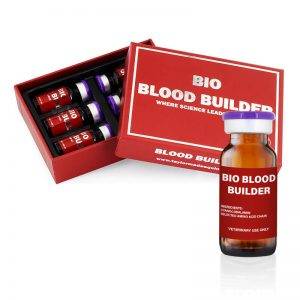Excenel
excenel for cattle (ceftiofur hydrochloride) is an injectable antibiotic from the cephalosporin class primarily used in veterinary medicine to treat respiratory infections and other bacterial infections in cattle and swine. It’s known for its effectiveness against several gram-positive and gram-negative bacteria and is valued for its broad-spectrum antibacterial activity. Here’s a detailed account: excenel for cows
Composition and Mechanism
Active Ingredient: Ceftiofur hydrochloride.
Mechanism of Action: Ceftiofur interferes with bacterial cell wall synthesis, leading to cell lysis and death. It’s bactericidal, targeting key enzymes within bacteria responsible for cell wall formation, thus killing them outright. This makes it especially effective against many bacterial strains commonly found in livestock.
Uses
Cattle:
Bovine Respiratory Disease (BRD): Treats bacterial pneumonia caused by pathogens like Mannheimia haemolytica, Pasteurella multocida, and Histophilus somni.
Foot Rot: Used for bacterial infections in the hoof.
Acute Metritis: Effective in treating post-calving uterine infections.
Swine:
Swine Respiratory Disease (SRD): Targets respiratory diseases caused by Actinobacillus pleuropneumoniae, Pasteurella multocida, and other pathogens. excenel for cattle
Dosage and Administration
Cattle: The recommended dose is 1 to 2 mg of ceftiofur per kg of body weight (0.5-1 mg/lb) given once daily, typically for 3 to 5 days, depending on the severity of the infection. It’s administered either subcutaneously or intramuscularly.
Swine: For swine respiratory disease, the dose is generally 3 to 5 mg/kg of body weight (1.36-2.27 mg/lb) given intramuscularly for 3 consecutive days.
Frequency: Treatment duration varies but is typically around 3-5 days.
Advantages
Broad-Spectrum Activity: excenel for cows targets many gram-positive and gram-negative bacteria, making it useful for mixed infections.
Safety Profile: It’s safe for use in lactating dairy cows and has minimal side effects at recommended doses.
Rapid Action: Effective concentration reaches the infection site quickly after injection.
Reduced Residue Concerns: With a short withdrawal period, Excenel minimizes residue risks in milk and meat.
Withdrawal Periods
Meat: The meat withdrawal period is around 4 days in cattle and 4 days in swine.
Milk: No milk withdrawal is required, making it suitable for dairy cattle.
Potential Side Effects
Injection Site Reactions: Swelling or pain at the injection site, although generally mild.
Allergic Reactions: Rare cases of hypersensitivity reactions, including anaphylaxis.
Gastrointestinal Upset: Infrequent, but diarrhea may occur in some animals.
Precautions
Not for Human Use: excenel for cows is strictly for animal use and should be handled with care to avoid accidental human exposure.
Veterinary Guidance: It’s recommended to use Excenel under the guidance of a veterinarian to ensure accurate dosing, administration, and adherence to withdrawal times.
Excenel is valued in veterinary medicine for its efficacy in combating respiratory diseases and other infections, and its safety profile for food-producing animals.
To use excenel for cows (ceftiofur hydrochloride) properly, follow these guidelines based on the type of livestock being treated and the infection being targeted. However, always consult a veterinarian for specific advice and accurate dosing.
General Usage Guidelines for Excenel
Preparation:
Storage: Store Excenel according to package instructions, typically at controlled room temperatures. Keep it out of direct sunlight.
Mixing: If the Excenel formulation requires mixing, follow the instructions on the bottle carefully. Some formulations need to be reconstituted with sterile water to achieve the correct concentration before administration.
Dosage and Administration:
Cattle:
Respiratory Infections, Foot Rot, Acute Metritis: Administer 1 to 2 mg of ceftiofur per kilogram (kg) of body weight (0.5-1 mg/lb), once daily, either intramuscularly (IM) or subcutaneously (SC), for 3 to 5 days.
Swine:
Swine Respiratory Disease (SRD): Administer 3 to 5 mg per kilogram of body weight (1.36-2.27 mg/lb), IM, once daily for 3 consecutive days.
Frequency: Treatment is generally once daily for each animal, with a typical course lasting 3-5 days, depending on the severity of the infection. excenel for cattle
Injection Technique:
Site: For IM injections, administer in the neck region to avoid muscle damage in meat-producing areas. For SC injections, ensure the needle goes under the skin.
Injection Site Cleanliness: Clean the injection site with alcohol or another antiseptic to minimize the risk of introducing bacteria.
Needle Size: Use an appropriately sized needle based on the animal’s size. For cattle, a 16-18 gauge needle works well, while a smaller gauge is usually sufficient for swine.
Observing Withdrawal Periods:
Meat Withdrawal: After the final injection, a withdrawal period of 4 days is recommended before slaughtering animals for meat.
Milk Withdrawal: For dairy cattle, Excenel has no milk withdrawal period, so milk can be collected during treatment.
Monitoring:
After administration, monitor animals for any signs of allergic reaction or adverse effects at the injection site. Swelling or slight irritation may occur but should resolve on its own.
If no improvement in the infection is observed within a few days, consult your veterinarian for alternative treatments or further guidance. excenel for cattle





Reviews
There are no reviews yet.